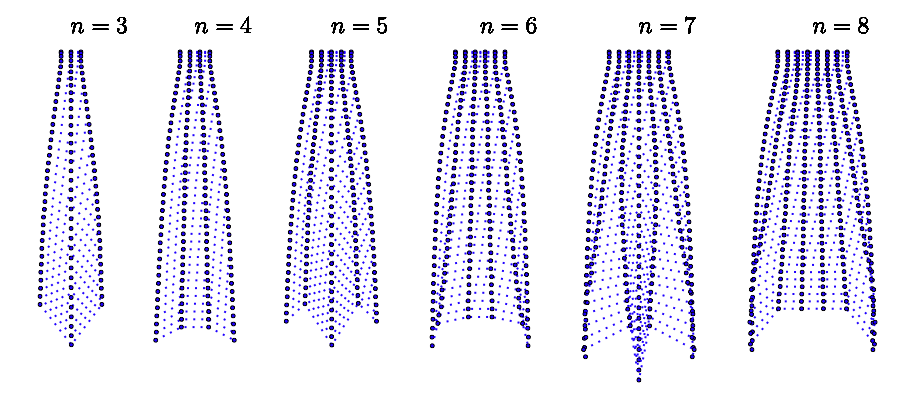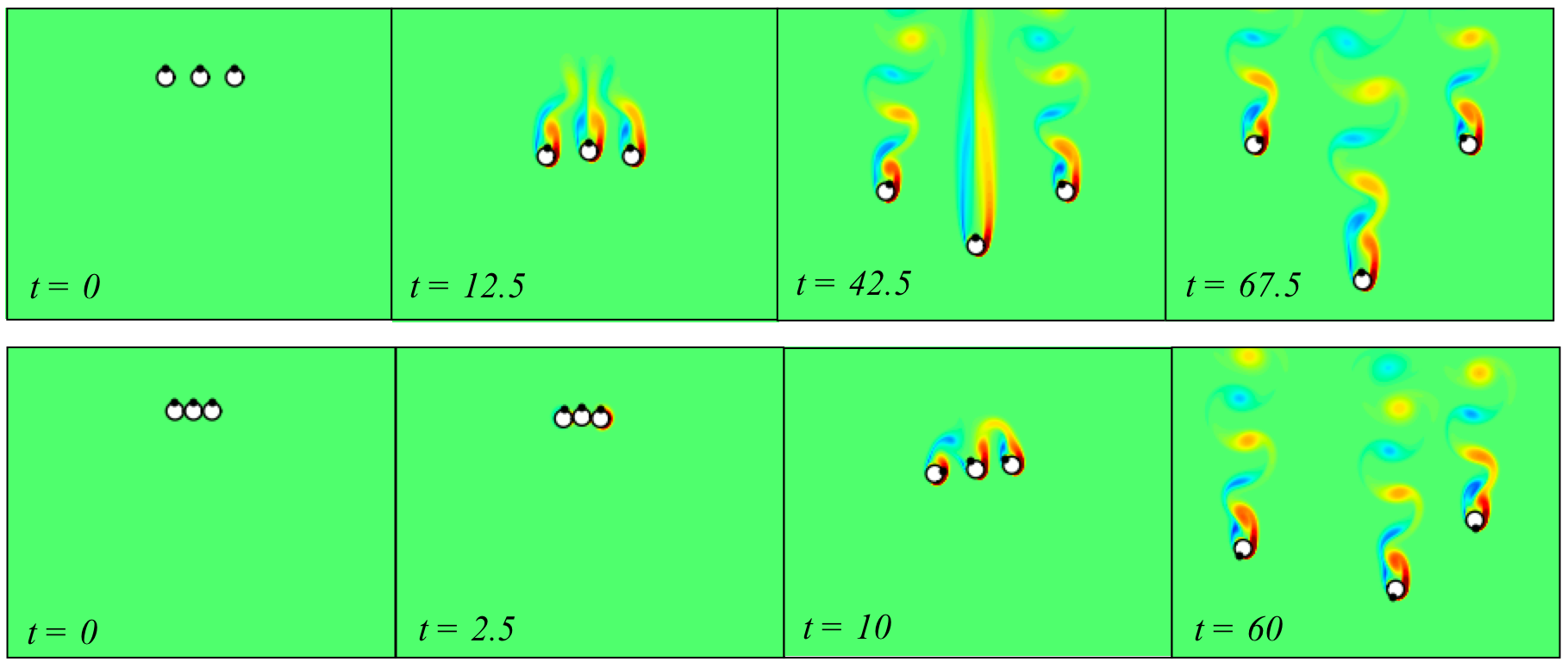Collective Behavior and self-organization Journal of Fluid Mechanics (2012)
Swarming of insects, schooling of fish and cloud formation are common phenomena of collective dynamics in nature. To understand the intricacies of their formation, it is desirable to quantify the interactions between individuals. The hydrodynamic interactions among particles have been studied largely in the low Reynolds number limit, i.e. in the Stokes flow limit. However, little is known in the intermediate Reynolds number regime, where the dynamics of the particles are further complicated by the fluid inertia, which introduces the unsteadiness to these problems.
We approach this problem numerically by investigating the dynamics of horizontal arrays of falling cylinders, with different initial conditions, and at Re ~ 102. To do so, we develop a direct numerical simulation scheme based on the immersed interface method. A novel aspect of our method is its ability to efficiently and accurately couple the dynamics of the freely moving objects with the fluid. We report the kinematics, the falling configuration and the wake pattern of the array, and investigate their dependence on the number of particles, as well as on the initial inter-particle spacing.

